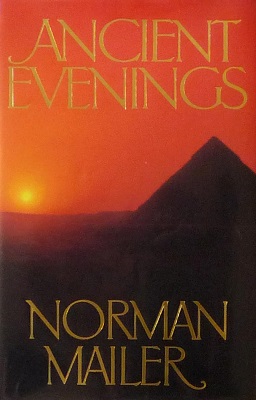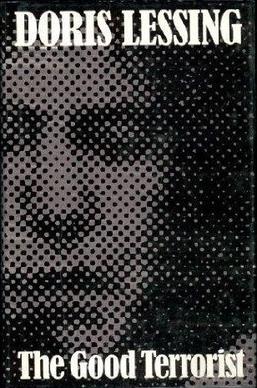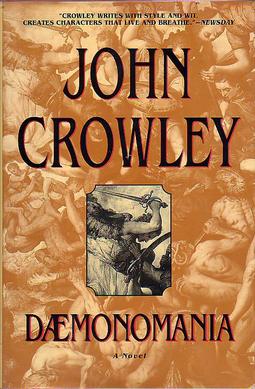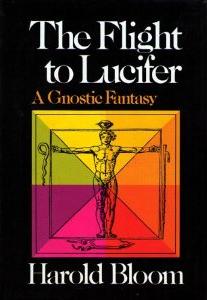In the Platonic, Neopythagorean, Middle Platonic, and Neoplatonic schools of philosophy, the demiurge is an artisan-like figure responsible for fashioning and maintaining the physical universe. The Gnostics adopted the term demiurge. Although a fashioner, the demiurge is not necessarily the same as the creator figure in the monotheistic sense, because the demiurge itself and the material from which the demiurge fashions the universe are both considered consequences of something else. Depending on the system, they may be considered either uncreated and eternal or the product of some other entity.

Gnosticism is a collection of religious ideas and systems that coalesced in the late 1st century AD among Jewish and early Christian sects. These various groups emphasized personal spiritual knowledge (gnosis) above the proto-orthodox teachings, traditions, and authority of religious institutions. Gnostic cosmogony generally presents a distinction between a supreme, hidden God and a malevolent lesser divinity who is responsible for creating the material universe. Consequently, Gnostics considered material existence flawed or evil, and held the principal element of salvation to be direct knowledge of the hidden divinity, attained via mystical or esoteric insight. Many Gnostic texts deal not in concepts of sin and repentance, but with illusion and enlightenment.
In literary criticism, stream of consciousness is a narrative mode or method that attempts "to depict the multitudinous thoughts and feelings which pass through the mind" of a narrator.

Genre fiction, also known as formula fiction or popular fiction, is a term used in the book-trade for fictional works written with the intent of fitting into a specific literary genre in order to appeal to readers and fans already familiar with that genre.

John Crowley is an American author of fantasy, science fiction and historical fiction. He has also written essays. Crowley studied at Indiana University and has a second career as a documentary film writer.

Jailbird is a novel by Kurt Vonnegut, published in 1979. The book is regarded as Kurt Vonnegut's "Watergate novel."
Judge Holden is a purported historical person who partnered with John Joel Glanton as a professional scalp-hunter in Mexico and the American Southwest during the mid-19th century. To date, the only source for Holden's existence is Samuel Chamberlain's My Confession: Recollections of a Rogue, an autobiographical account of Chamberlain's life as a soldier during the Mexican–American War. Chamberlain described Holden as the most ruthless of the roving band of mercenaries led by Glanton, with whom Chamberlain had traveled briefly after the war: '[he] had a fleshy frame, [and] a dull tallow colored face destitute of hair and all expression;' 'a man of gigantic size'; 'by far the best educated man in northern Mexico'; 'in short another Admirable Crichton, and with all an arrant coward'.

Slow River is a science fiction novel by British writer Nicola Griffith, first published in 1995. It won the Nebula Award for Best Novel and the Lambda Literary Award. The novel received critical praise for its writing and setting, while its use of multiple narrative modes was criticised.

David Lindsay was a Scottish author best remembered for the philosophical science fiction novel A Voyage to Arcturus (1920).
Edward Harold Physick was an English writer, known chiefly as a critic and authority on John Milton; also, a poet and fantasy writer. He was using the pseudonym E. H. Visiak by 1909.

Harold Brodkey, born Aaron Roy Weintraub, was an American short-story writer and novelist.

Blood Meridian; or, The Evening Redness in the West is a 1985 epic historical novel by American author Cormac McCarthy, classified under the Western, or sometimes the anti-Western, genre. McCarthy's fifth book, it was published by Random House.

A Voyage to Arcturus is a novel by the Scottish writer David Lindsay, first published in 1920. An interstellar voyage is the framework for a narrative of a journey through fantastic landscapes. The story is set at Tormance, an imaginary planet orbiting Arcturus, which in the novel is a binary star system, consisting of the stars Branchspell and Alppain. The lands through which the characters travel represent philosophical systems or states of mind as the main character, Maskull, searches for the meaning of life. The book combines fantasy, philosophy, and science fiction in an exploration of the nature of good and evil and their relationship with existence. Described by critic, novelist, and philosopher Colin Wilson as the "greatest novel of the twentieth century", it was a central influence on C. S. Lewis' Space Trilogy, and through him on J. R. R. Tolkien, who said he read the book "with avidity". Clive Barker called it "a masterpiece" and "an extraordinary work ... quite magnificent".

Ancient Evenings is a 1983 historical novel by American author Norman Mailer. Set in ancient Egypt and dealing with the lives of the characters Menenhetet One and Meni, the novel received mixed reviews. Reviewers noted the historical research that went into writing it and considered Mailer successful at conveying the nature of ancient Egyptian life. However, they also criticized the novel's narration and questioned its literary merit. Ancient Evenings has been compared to the work of the poet James Merrill and the novelist Thomas Pynchon, as well as to Mailer's novel Harlot's Ghost (1991). Some have suggested that its opening passage is its strongest part. Ancient Evenings served as an inspiration for the artist Matthew Barney's operatic film River of Fundament (2014).

Grimus is a 1975 fantasy and science fiction novel by Salman Rushdie. It was his literary debut.

The Good Terrorist is a 1985 political novel written by the British novelist Doris Lessing. The book's protagonist is the naïve drifter Alice, who squats with a group of radicals in London and is drawn into their terrorist activities.

Daemonomania is a 2000 fantasy novel by John Crowley. It is Crowley's seventh novel, and as the third novel in Crowley's Ægypt Sequence, a sequel to Crowley's 1994 novel Love & Sleep. The novel follows protagonist Pierce Moffett as he continues his book project begun in The Solitudes about the Renaissance and Hermeticism, while dealing with a stormy relationship with his girlfriend Rosie Ryder.

Harold Bloom was an American literary critic and the Sterling Professor of Humanities at Yale University. In 2017, Bloom was called "probably the most famous literary critic in the English-speaking world." After publishing his first book in 1959, Bloom wrote more than 50 books, including over 40 books of literary criticism, several books discussing religion, and one novel. He edited hundreds of anthologies concerning numerous literary and philosophical figures for the Chelsea House publishing firm. Bloom's books have been translated into more than 40 languages. He was elected to the American Philosophical Society in 1995.

A Little Life is a 2015 novel by American writer Hanya Yanagihara. Lengthy and tackling difficult subject matter, it garnered critical acclaim and became a best seller.

Travis John Klune is an American author of fantasy and romantic fiction featuring gay and LGBTQ+ characters. His fantasy novel The House in the Cerulean Sea is a New York Times best seller and winner of the 2021 Alex and Mythopoeic Awards. Klune has spoken about how his asexuality influences his writing. His novel Into This River I Drown won the Lambda Literary Award for Best Gay Romance in 2014.
















